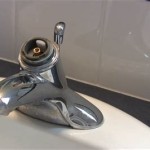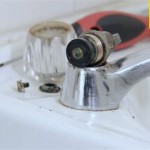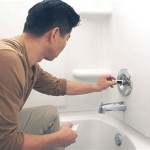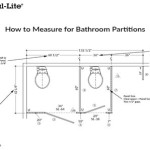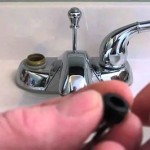Can You Put Lino On Top of Bathroom Tiles? A Comprehensive Guide
The question of whether linoleum, often referred to as "lino," can be installed over existing bathroom tiles is a common one for homeowners looking to renovate or update their bathrooms without the extensive labor and cost associated with tile removal. While it is technically possible to install lino over tiles, the success and longevity of such an installation hinge on several critical factors. A careful evaluation of the existing tile condition, proper surface preparation, and the selection of appropriate materials are paramount to achieving a satisfactory and durable result. Failure to address these considerations can lead to problems such as uneven surfaces, adhesive failure, and premature wear of the linoleum.
This article will delve into the various aspects of installing lino over bathroom tiles, providing a detailed analysis of the potential benefits, drawbacks, and necessary steps to ensure a successful installation. It aims to equip readers with the knowledge needed to make an informed decision and to execute the project effectively, should they choose to proceed.
Evaluating the Existing Tile Condition
One of the most crucial steps before even considering installing lino over bathroom tiles is a thorough assessment of the existing tile floor. The condition of the tiles will directly impact the final result and the lifespan of the linoleum. Key aspects to examine include:
Levelness: An ideal subfloor for linoleum installation is perfectly level. If the existing tiles are uneven, cracked, or have significant grout lines, the imperfections will telegraph through the linoleum over time, creating an unsightly surface and potentially leading to premature wear. Minor grout lines can often be addressed with a leveling compound, but larger variations in tile height or significant damage will necessitate more extensive repairs or even tile removal.
Stability: Loose or unstable tiles are a major concern. Installing lino over loose tiles will not solve the underlying problem and will likely result in the linoleum detaching or cracking as the tiles shift beneath. All loose tiles must be properly re-adhered or removed and the resulting gaps filled with a suitable patching compound before proceeding.
Moisture: Bathrooms are inherently damp environments, and moisture issues can be compounded when covering existing tiles. Check for signs of moisture damage, such as efflorescence (a white, powdery substance) on the grout lines or discoloration of the tiles. Any signs of water penetration need to be addressed before installing the linoleum, as trapped moisture can lead to mold growth, adhesive failure, and structural damage.
Tile Type: The type of tile can also influence the success of a linoleum installation. Smooth, non-porous tiles like porcelain or glazed ceramic will generally provide a better surface for adhesion than rough, porous tiles like slate or unglazed terracotta. If the tiles are very smooth, lightly scuffing the surface with sandpaper can improve the bond of the adhesive.
Existing Grout: Deeply recessed or wide grout lines can pose a problem. While a self-leveling compound can address these issues, careful consideration must be given to the depth and width of the grout lines. If the grout lines are too deep or wide, the leveling compound may crack or sink over time, leading to an uneven surface.
If the existing tiles are in poor condition, with significant unevenness, instability, or moisture issues, removing the tiles and preparing a fresh subfloor is generally the most prudent option. While it may involve more work upfront, it will provide a far superior and longer-lasting result.
Preparing the Tile Surface for Linoleum Installation
Assuming the existing tiles are deemed suitable for covering, proper surface preparation is vital for ensuring a successful linoleum installation. This step is crucial for creating a smooth, even, and stable surface that the adhesive can properly bond to. The specific steps involved may vary depending on the condition of the tiles, but generally include:
Cleaning: Thoroughly clean the tiles and grout lines to remove any dirt, grease, soap scum, or other contaminants. Use a strong detergent or degreaser and scrub the surface vigorously. Rinse thoroughly with clean water and allow the floor to dry completely. Any residual contaminants can impede the adhesive bond and lead to premature failure.
Repairing: Address any cracks, chips, or other imperfections in the tiles. Fill these areas with a suitable patching compound designed for tile repair. Allow the patching compound to dry completely according to the manufacturer's instructions and sand it smooth to blend seamlessly with the surrounding tiles.
Leveling: As mentioned earlier, a level surface is essential for a successful linoleum installation. Apply a self-leveling compound over the entire tile floor to fill in grout lines and create a smooth, even surface. Choose a self-leveling compound that is specifically designed for use over tile and follow the manufacturer's instructions carefully. Pay particular attention to the mixing ratio and application thickness. Allow the self-leveling compound to dry and cure completely before proceeding.
Sanding: Once the self-leveling compound has dried, lightly sand the surface to remove any imperfections and create a slightly rough texture. This will improve the adhesion of the linoleum adhesive.
Priming: Apply a primer specifically designed for use with linoleum adhesives. The primer will help to improve the bond between the self-leveling compound and the linoleum adhesive. Choose a primer that is compatible with both the self-leveling compound and the adhesive. Apply the primer evenly according to the manufacturer's instructions and allow it to dry completely before proceeding.
Dust Removal: After sanding and priming, thoroughly remove all dust and debris from the floor using a vacuum cleaner or a damp cloth. Even a small amount of dust can interfere with the adhesive bond.
Proper surface preparation is a time-consuming but essential step. Skipping or neglecting these steps can significantly compromise the final result and lead to costly repairs down the line.
Selecting the Right Linoleum and Adhesive
Choosing the appropriate linoleum and adhesive is as crucial as the preparation work. Different types of linoleum offer varying levels of durability, water resistance, and aesthetic appeal. Similarly, different adhesives are formulated for specific applications and substrates. Careful consideration should be given to the following factors:
Linoleum Thickness: Thicker linoleum generally offers greater durability and resistance to indentations and tears. For high-traffic areas like bathrooms, a thicker gauge is recommended. Thinner linoleum may be more susceptible to damage from heavy objects or furniture.
Linoleum Type: Sheet linoleum offers a seamless installation, which is ideal for bathrooms where water resistance is paramount. Linoleum tiles, while easier to install, have seams that can be vulnerable to water penetration. If choosing linoleum tiles, ensure they are properly sealed to prevent moisture damage.
Water Resistance: Ensure the chosen linoleum is specifically designed for wet environments like bathrooms. Look for products that are labeled as waterproof or water-resistant. Certain linoleum products also have enhanced antimicrobial properties, which can be beneficial in a bathroom setting.
Adhesive Type: Select an adhesive that is specifically recommended for use with linoleum and is compatible with the prepared tile surface. Water-based adhesives are generally preferred for bathroom applications due to their low VOC (volatile organic compound) content and ease of cleanup. However, solvent-based adhesives may offer superior bond strength in certain situations. Always consult the linoleum and adhesive manufacturer's recommendations to ensure compatibility.
Adhesive Application: Apply the adhesive evenly and according to the manufacturer's instructions. Use the correct trowel size to achieve the proper adhesive thickness. Over-application of adhesive can lead to bubbling or unevenness, while under-application can result in a weak bond.
Environmental Factors: Take into account the ambient temperature and humidity levels during installation. Extreme temperatures or high humidity can affect the adhesive's curing time and bond strength. Ensure the room is properly ventilated during and after the installation to allow the adhesive to dry completely.
Choosing the right materials and following the manufacturer's instructions meticulously are essential for a long-lasting and aesthetically pleasing linoleum floor.
In conclusion, installing linoleum over existing bathroom tiles is feasible but requires a comprehensive understanding of the factors involved. The condition of the existing tiles, meticulous surface preparation, and the selection of appropriate materials are all critical for success. By carefully evaluating these aspects and following the recommended procedures, homeowners can achieve a durable and attractive linoleum floor in their bathrooms without the hassle and expense of removing the existing tiles.

Can You Put Bathroom Wall Panels Over Tiles Igloo Surfaces
Can You Tile Over Linoleum Flooring Maria Louise Design

Can You Renovate Bathrooms With Vinyl Flooring Imagine Floors

Should You Install Vinyl Floor Over Tile

How To Install Sheet Vinyl Floor Decor Adventures

Vinyl Planks In Bathrooms Residential Inspiration Flooring

How To Install Vinyl Plank Floors In A Bathroom Over Tile

Can You Lay Tile Over Linoleum Rubi Blog Usa

How To Cover Ugly Al Bathroom Floors With A Vinyl Mat The Homes I Have Made

5 Pros And Cons For Installing Vinyl Flooring In Bathroom
Related Posts
